In Japan, the word gaijin (short for gaikokujin) literally means “outside person”. While technically a neutral term for foreigners, gaijin carries a sharper edge. It is not just about being from elsewhere; it is about not quite belonging. “You can live in Tokyo for 20 years, speak fluent Japanese, cook your miso from scratch — and still be a gaijin. The boundary isn’t just geographical; it’s cultural, emotional, and often invisible,” says Anand Morwani, chef-partner at Gaijin, the new Japanese restaurant in Mumbai’s Khar.
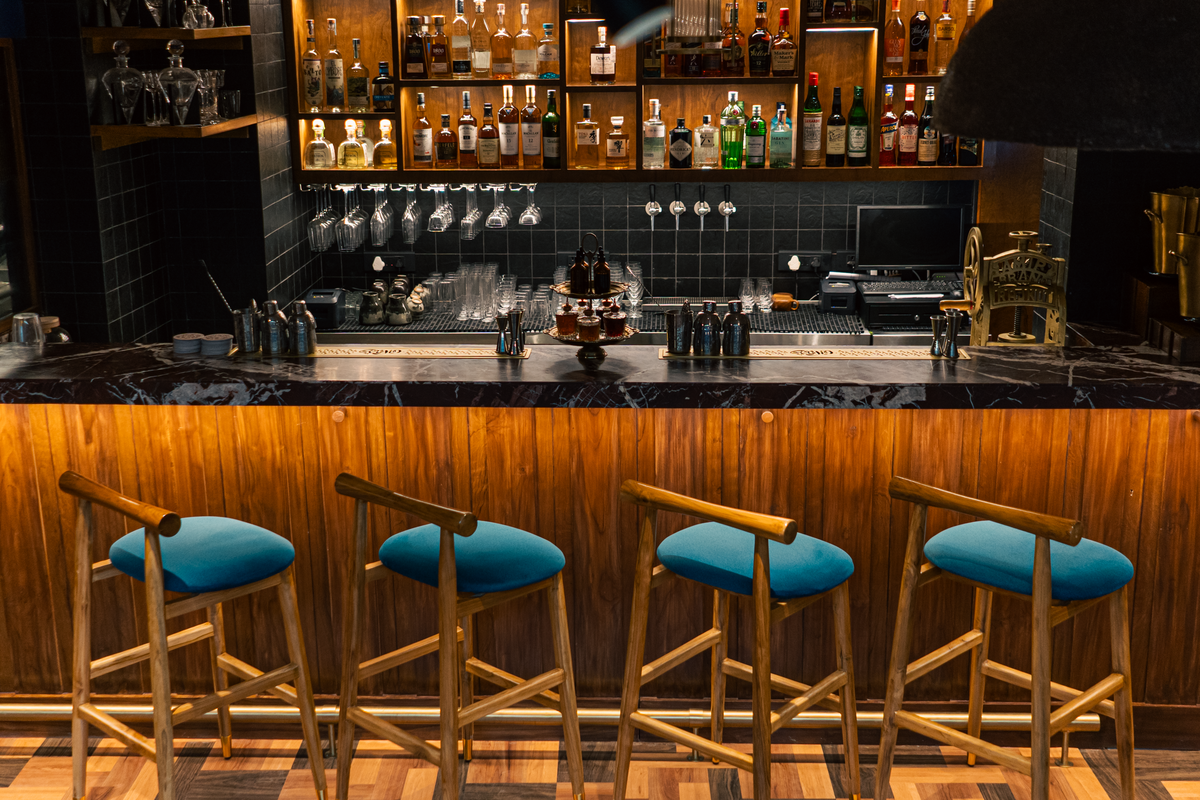
The bar
| Photo Credit:
Special Arrangement
When it comes to food, this outsider status can be both liberating and fraught. The gaijin gaze is wide-eyed, reverent, sometimes clumsy. And while Anand spent a few months travelling across Japan to learn more about the cuisine, he often asked himself: “Can I bring this home? Can I make it my own? But what does it mean to cook something that was never really yours to begin with?”
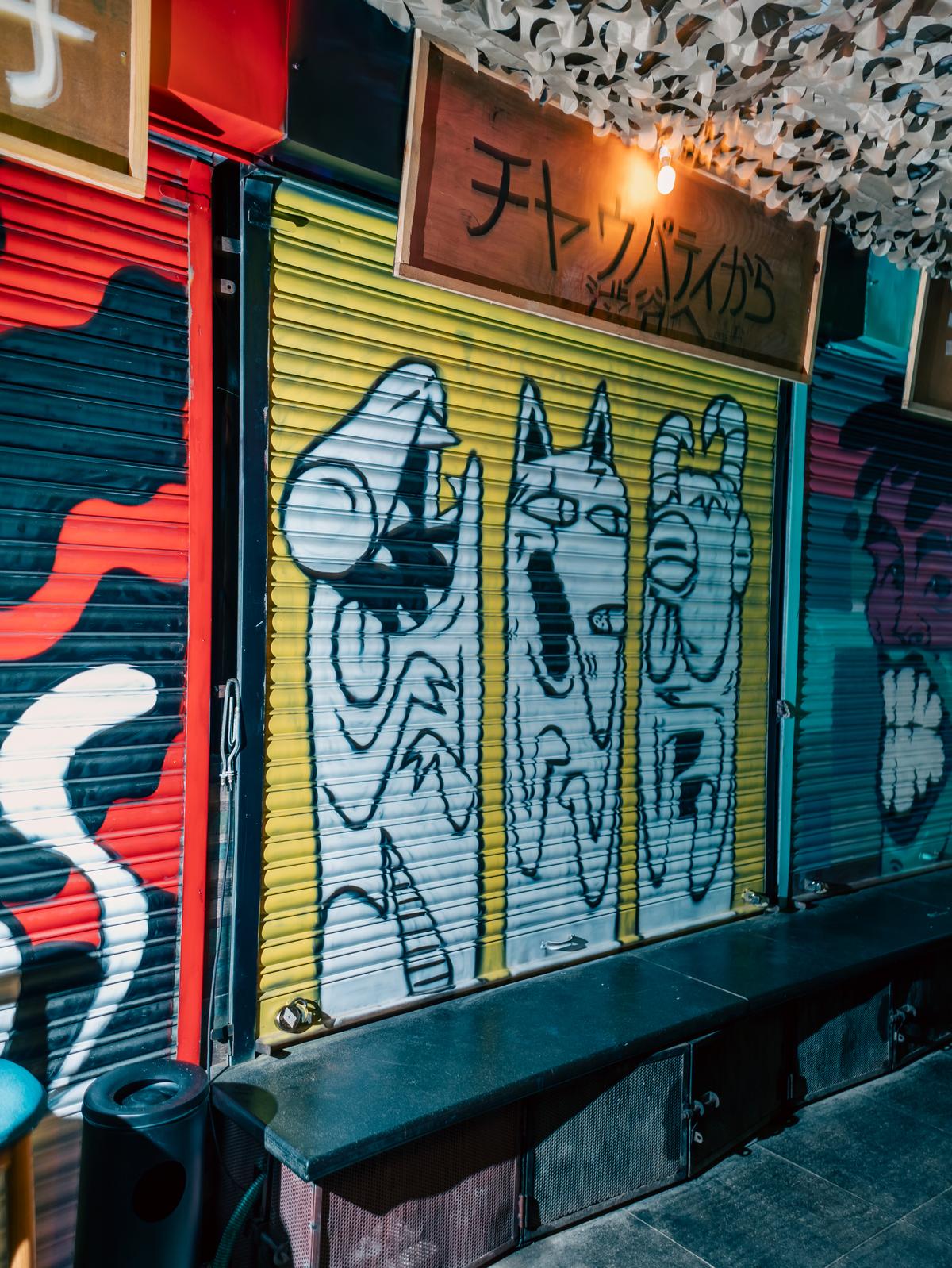
The alleyway shutters
| Photo Credit:
Special Arrangement
Gaijin reimagines Japanese food through an Indian lens — bold flavours, sharp technique, and zero clichés.
The space
Gaijin draws you in slowly with its deep burgundy Enji-iro walls and a certain stillness that cuts through the chaos of the Mumbai junction it overlooks. Light filters in through fluted panels, bouncing off stone, wood, and brushed brass that nods to temple gongs. The space feel considered: Aizome blue wraps the space in quiet, a seven-tonne Suiseki stone sits like a monk in the middle of the room, and the Ishi-doro lanterns above add a celestial softness. There is a bar that bridges robata fire and cocktail fluidity, a vinyl-listening corner that feels lifted from a Tokyo back alley, and a graffiti alleyway (which is everywhere on Instagram) that lets you slip away for a moment. Designed by Keith Menon of Spiro Spero, it is not trying to be Japan. It is trying to be honest about how we see it, from the outside.
The food
The menu invites free form grazing: cold plates, small plates (vegetarian and non-vegetarian), nigiri, gunkan, maki, mains, and desserts, each dish a reimagination of something familiar. Some of the highlights from the small plates section includes the pork and clam tostada, which is messy, moody, and moreish. The pork is slow-braised and tender, while the briny clams bring contrast and chew. What sets it apart is the peach kimchi hot sauce and the black garlic and water chestnut emulsion, which tastes like soil and silk. Add the crunch of the tostada and the puffed bubu arare, and you have got something that dances between surf, turf, and surprise.
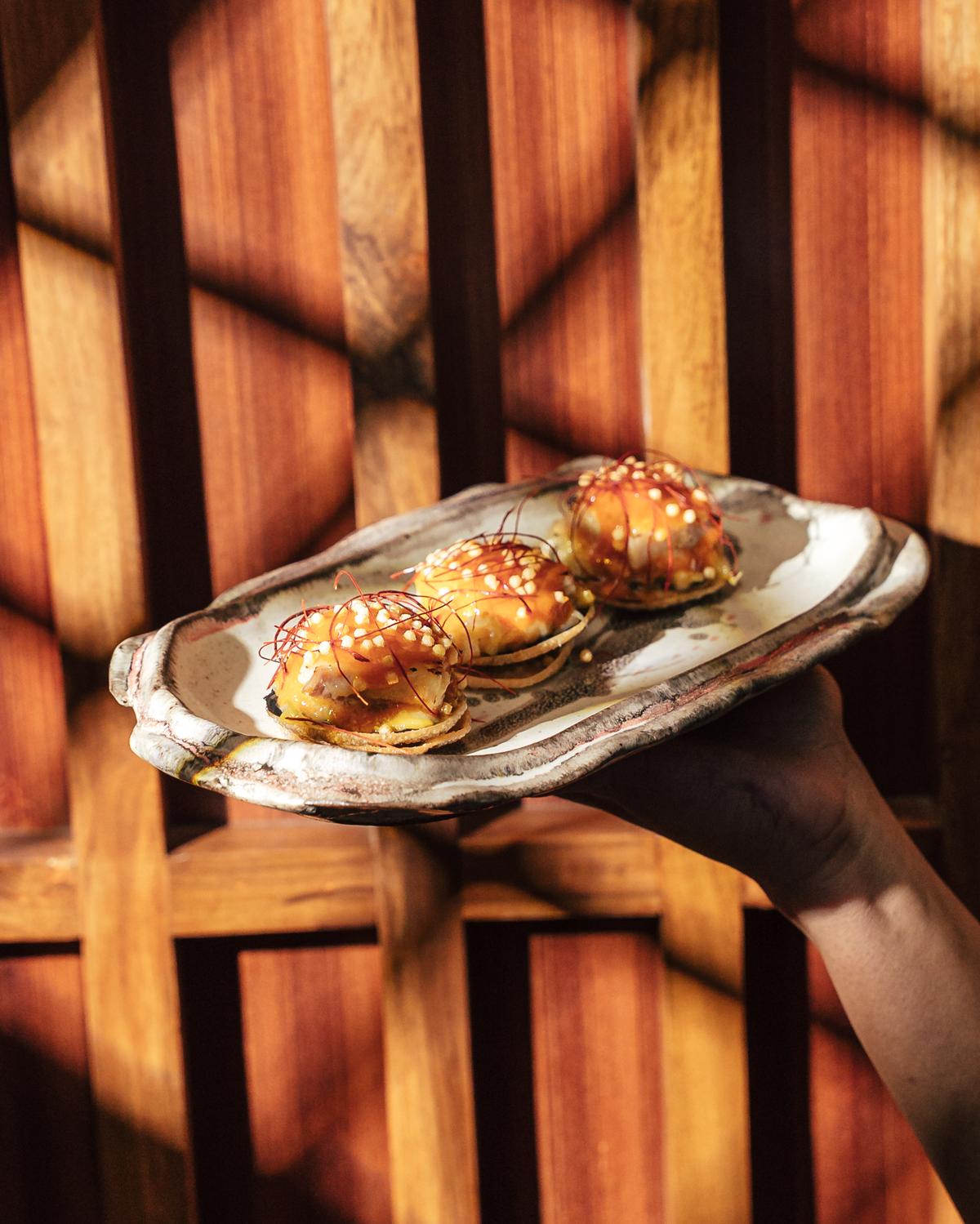
The pork and clam tostada
| Photo Credit:
Special Arrangement
The crispy kataifi scallop is textural goodness. The kataifi — comprising fried vermicelli — crackles dramatically before giving way to a plump, perfectly-seared scallop. The roasted bell pepper adds sweetness, while the rayu beurre blanc and truffle corn purée form a slick, luxurious sauce that edges just short of overkill. If anything, the dish borders on dramatic excess.
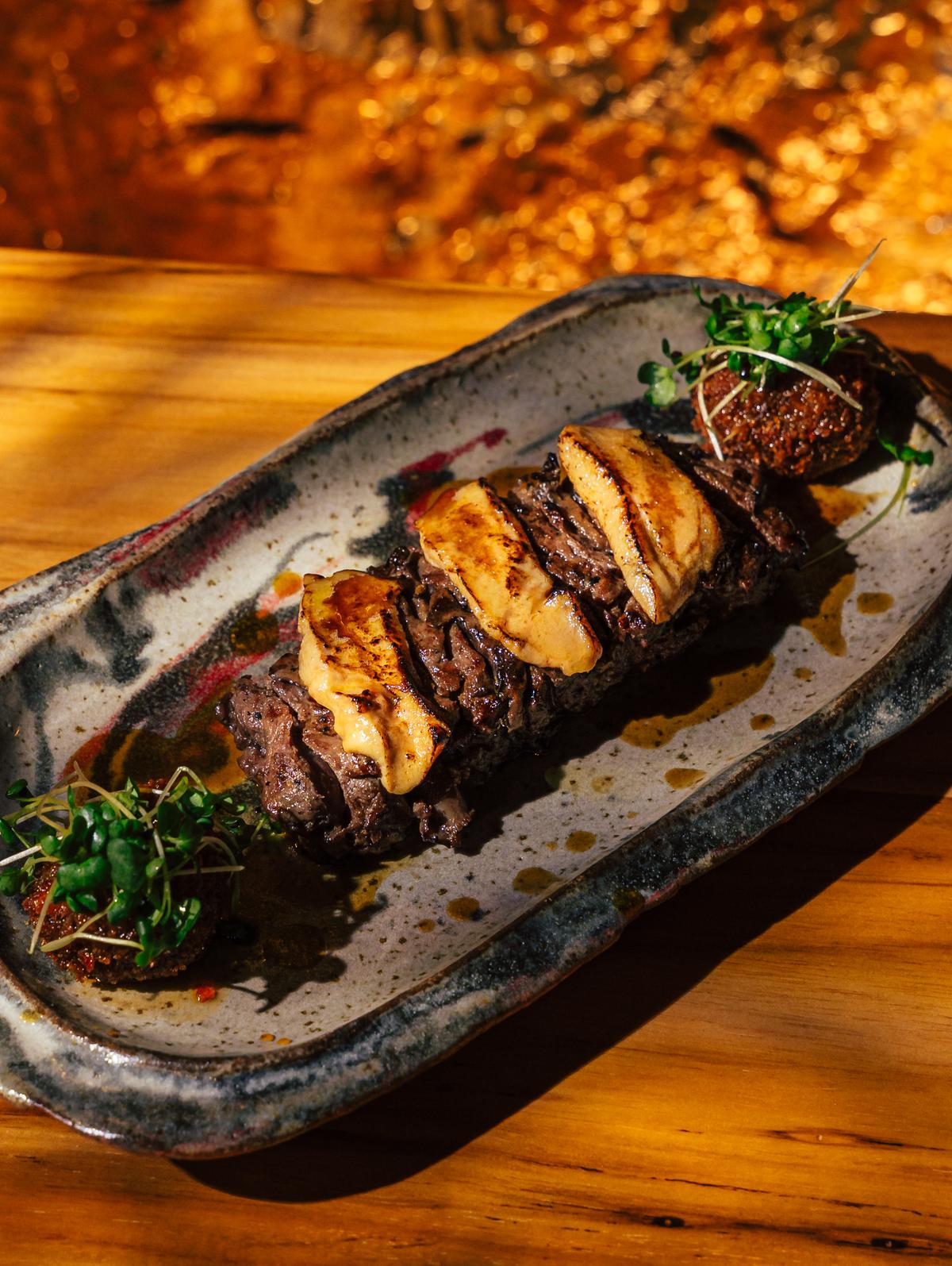
The tenderloin katsu versus yaki
| Photo Credit:
Special Arrangement
The bone marrow arrives glistening, its fatty richness cut by a piquant ginger-scallion slaw and pickled radish. Shemiji mushrooms echo the marrow’s umami, while the black garlic glaze lends molasses-like depth. Cashew miso adds a nutty, slightly sweet counterpoint that brings it all together. Best enjoyed spooned onto charred bread or straight from the bone.
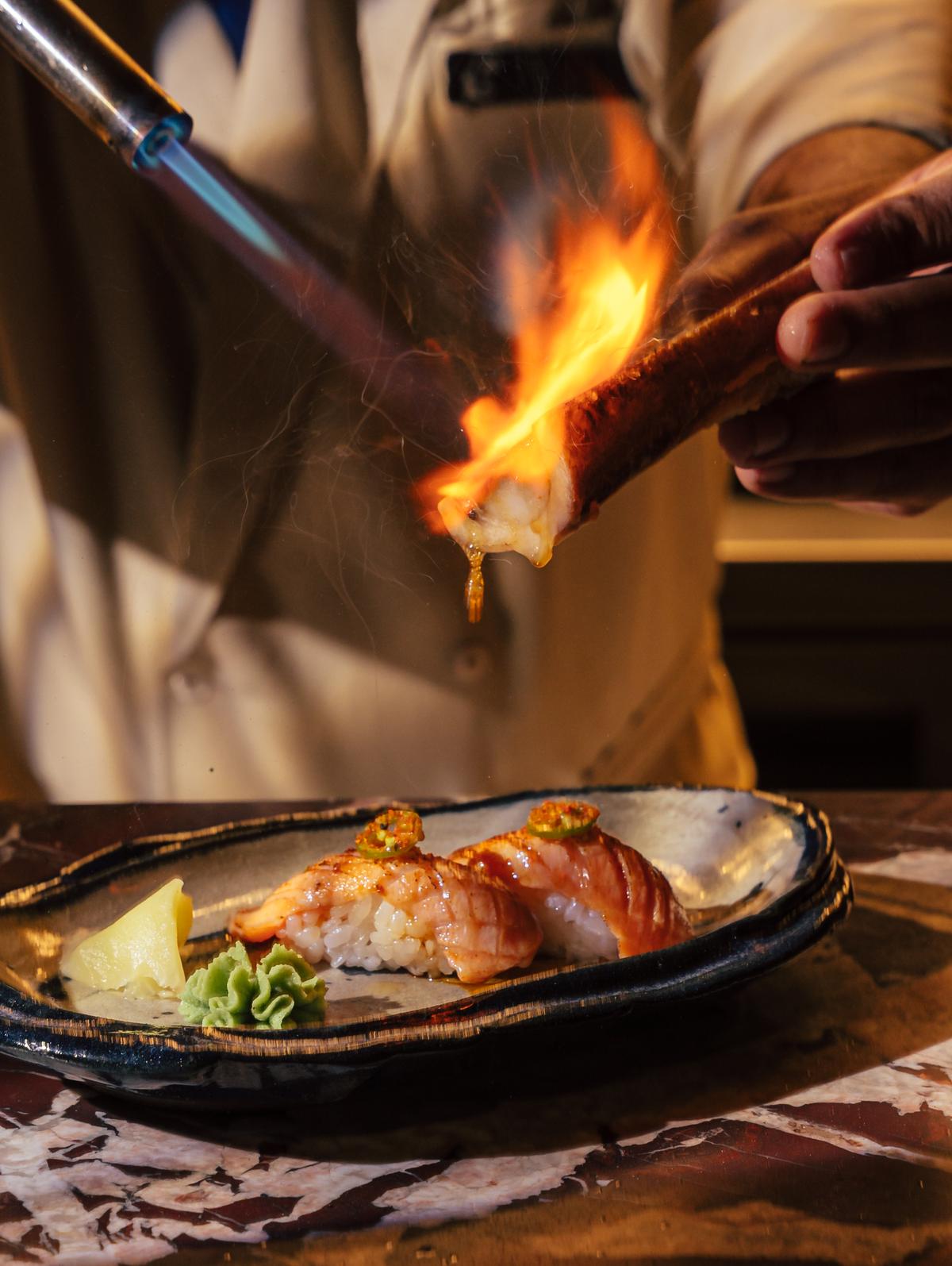
The salmon aguri
| Photo Credit:
Special Arrangement
As far as the cold plates go, the Not Beef Carpaccio stands out for its soft and umami-rich flavour, lifted by zingy pickled celery and a punchy ginger-scallion slaw. The bone marrow adds decadence, and the parmesan shiso balsamic glaze takes it somewhere unexpected. The gyoza shell gives that much-needed crunch.
The tuna akami versus the chutoro temaki is a playful face-off: the lean, clean Akami brings freshness layered over creamy avocado, tucked into a crisp nori taco that crackles on bite. But it is the chutoro that lingers — rich, buttery, and elevated by a delicate wasabi foam that kicks in just enough heat.
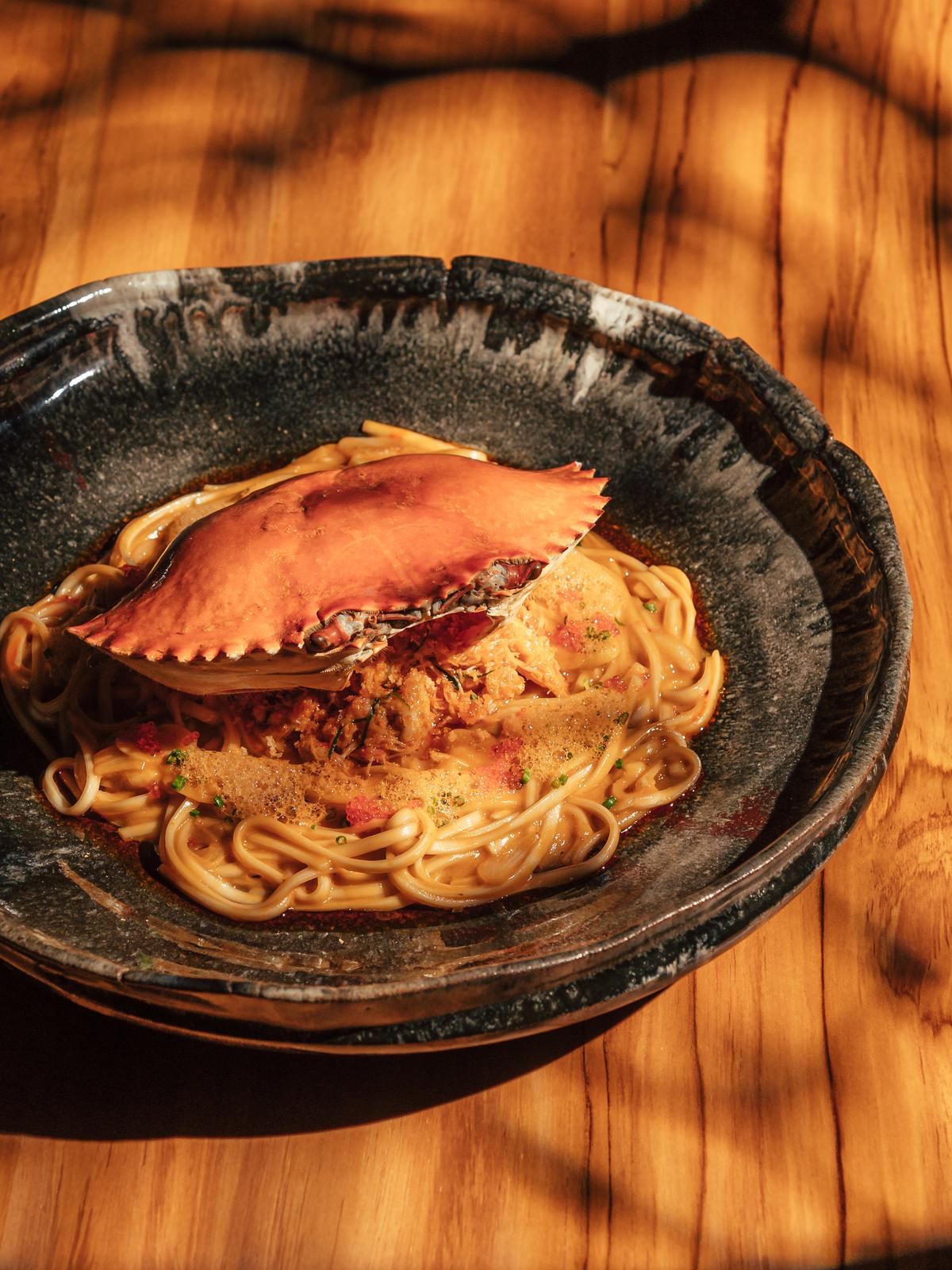
The crab udon noodles
| Photo Credit:
Special Arrangement
Round things off with the crab udon noodles. It soaks up every bit of the buttery crab-laced broth, which lands somewhere between umami-rich and gently sweet. The crab meat is generous, soft, and folded through with restraint — no gimmicks, just good seafood.
The desserts here feel more theatrical than necessary. The banoffee, layered with coffee namelaka, lime panna cotta, and miso white chocolate, leans overly rich, despite the clever pecan crunch. The brie cheesecake is an acquired taste. Think cheese on a cracker with a drizzle of truffle-laced honey — clever, but not craveable. The mandarin is the prettiest of the lot, shaped like the real fruit and dotted with edible dew drops, but it prioritises visuals over balance. Impressive on paper, but honestly, I would skip the sweets.
The cocktails
The cocktail menu reads like a storybook: equal parts illustrated dreamscape and tactile guide, with a distinct outsider’s lens. There is a sense of play throughout, each drink layered and thoughtful without ever feeling overworked. The Kombu Breeze is a standout: briny, balanced, and lifted by a spearmint foam that dissolves like sea air. The Sakura Sunset brings tropical ease, while Mt. Fuji offers a more structured sip — floral, clean, and accompanied by a bit of theatre, with ice chipped tableside to reveal a hidden bottle. It also comes with a second refill for the price of one. Some may find the presentation teetering on excess. Still, it is a menu that rewards curiosity, where even the more experimental pours feel grounded in good taste.
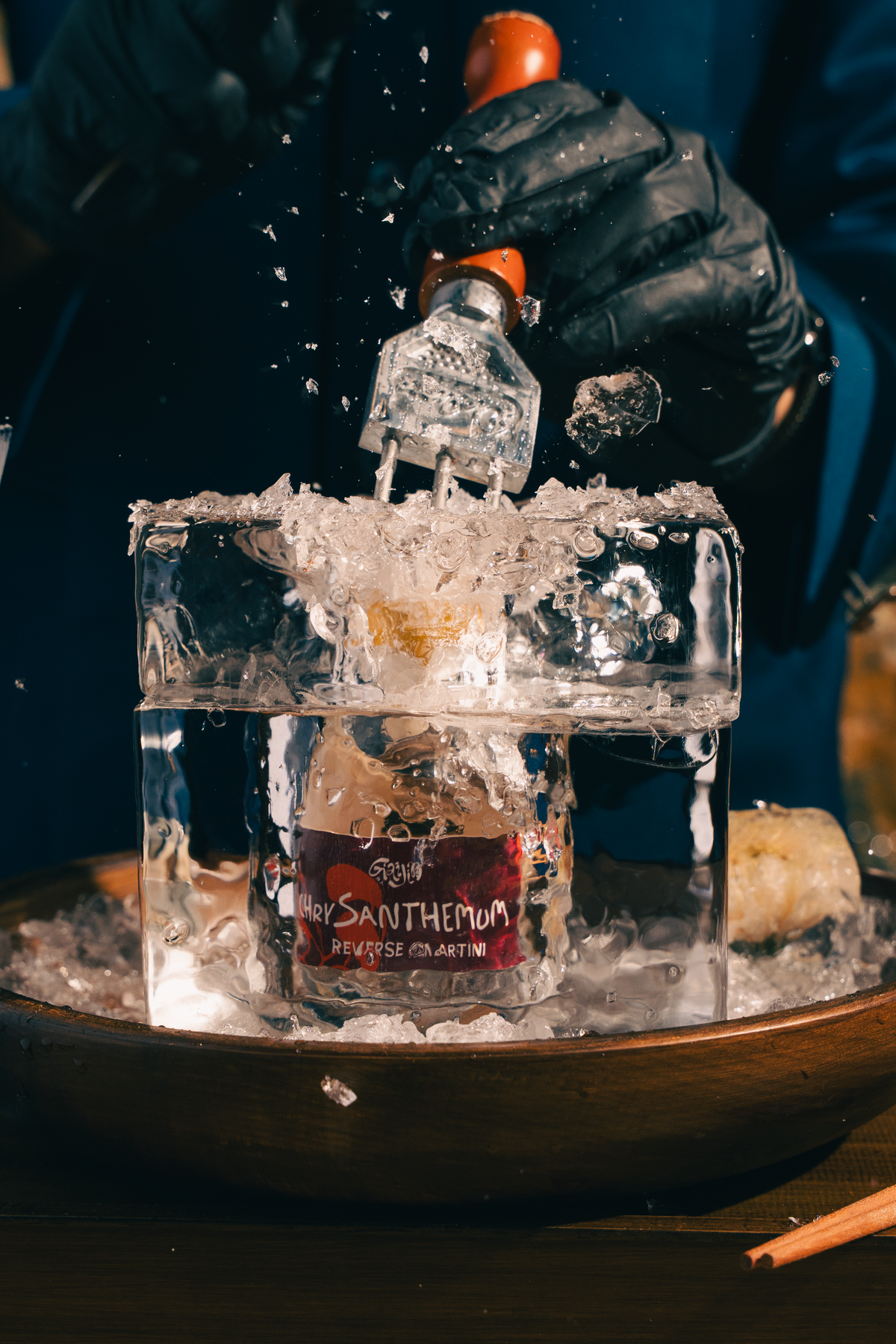
The Mt. Fuji
| Photo Credit:
Special Arrangement
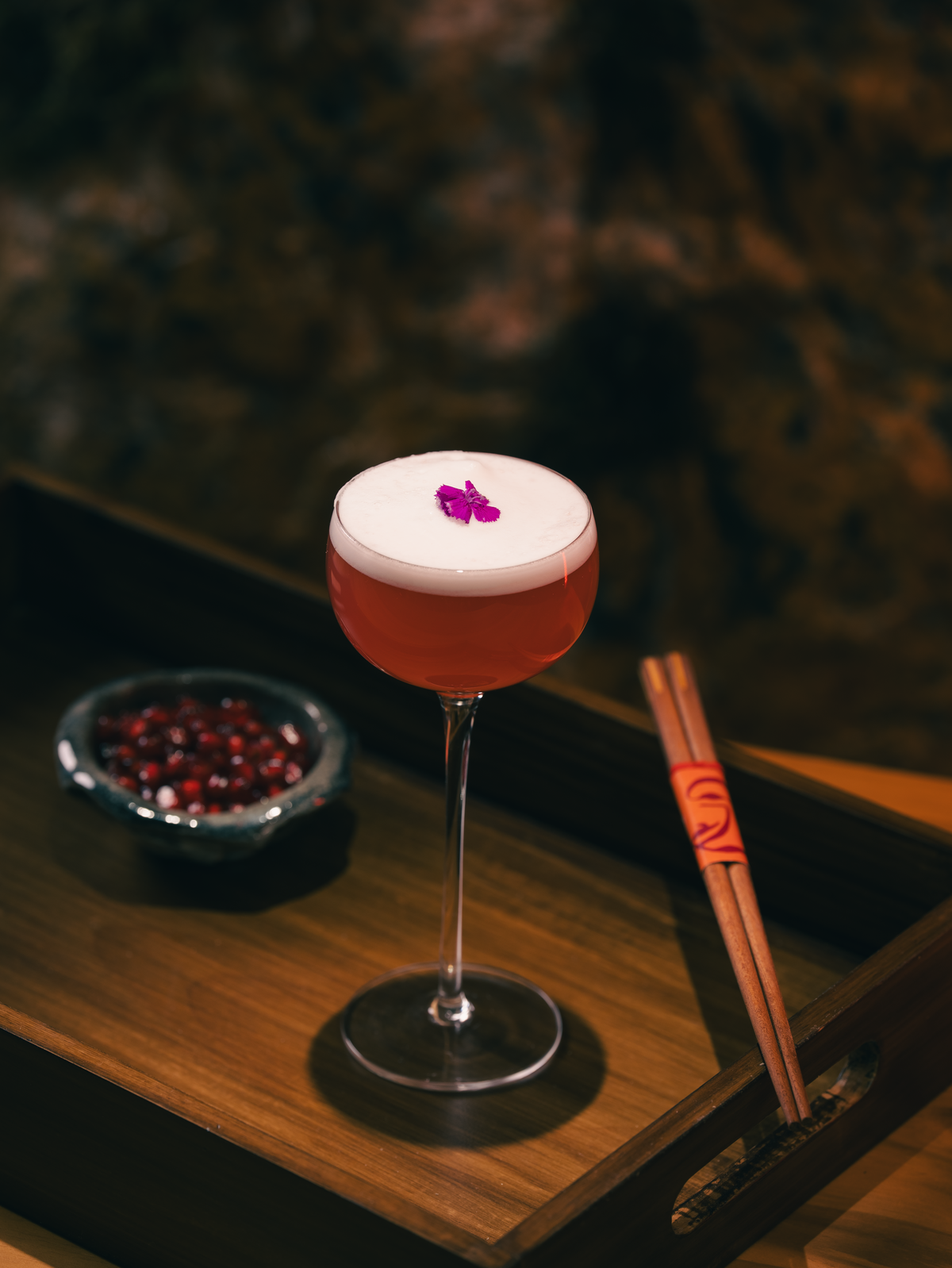
The Sakura Sunset
| Photo Credit:
Special Arrangement
A meal for two costs ₹4,500 plus taxes.
Published – May 20, 2025 05:13 pm IST
#Gaijin #brings #Japan #Mumbai #vinyl #truffle #rebellion
